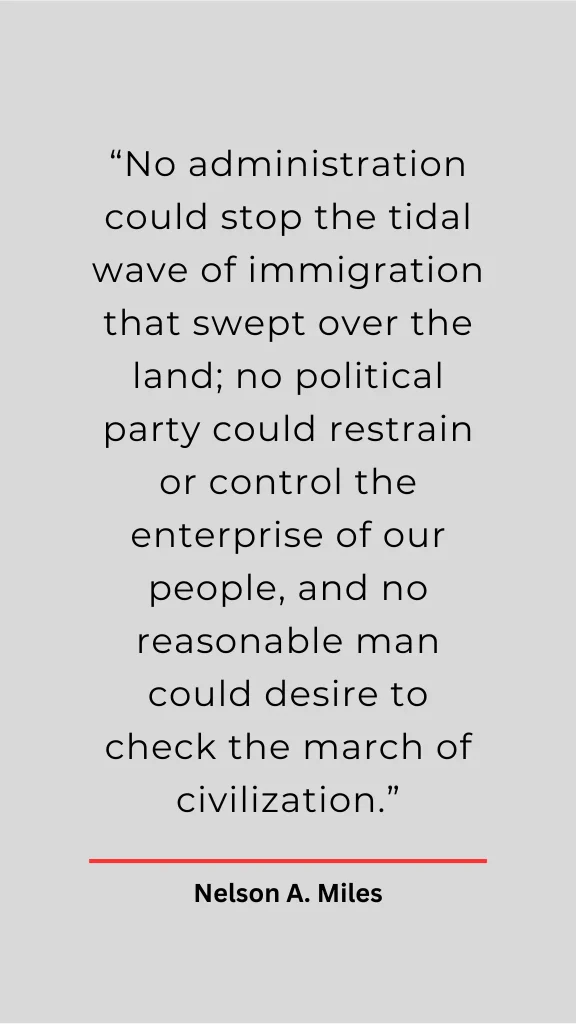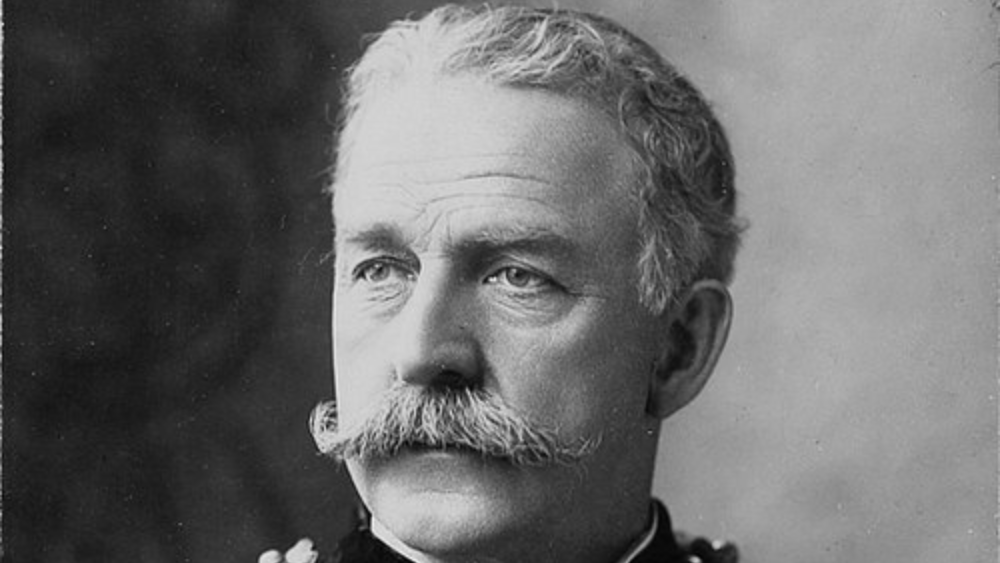Nelson Appleton Miles remains one of the most remarkable figures in American military history. Born on August 8, 1839, on a family farm in Westminster, Massachusetts, Miles would go on to shape the United States Army through three major conflicts: the Civil War, the Indian Wars, and the Spanish–American War. His career spanned more than four decades, and his legacy stretches from the battlefields of Virginia to the plains of the American West and the shores of Puerto Rico.
Early Life and Ambitions
Raised in Westminster, Miles received his early education at the local academy under the guidance of John R. Galt. Initially interested in business, he moved to Boston as a teenager and worked as a clerk in a crockery store while attending night classes at Comer’s Commercial College. Even then, he displayed a fascination with military life, studying tactics, strategy, and drill under Eugene Salignac, a self-styled French army veteran. These early lessons would prepare him for the challenges ahead.
Civil War Service: Courage Under Fire
With the outbreak of the Civil War, Miles enlisted in the Union Army on September 9, 1861. He received a commission as a first lieutenant in the 22nd Massachusetts Volunteer Infantry before quickly rising to lieutenant colonel of the 61st New York Volunteer Infantry by May 1862. His bravery in battle earned him the rank of colonel after the Battle of Antietam in September of that year.
Miles distinguished himself in some of the war’s fiercest engagements, including Fredericksburg, Chancellorsville—where he was shot in the neck and abdomen—the Overland Campaign, and the Appomattox Campaign. Wounded four times, he was recognized with brevet promotions for his leadership at Chancellorsville and Spotsylvania Court House. In 1892, three decades later, he received the Medal of Honor for his gallantry at Chancellorsville.
Following the war, he commanded Fort Monroe, Virginia, where Confederate President Jefferson Davis was held prisoner, defending himself against accusations of mistreatment and solidifying his reputation as a disciplined and capable officer.
The Indian Wars: Strategy on the Plains
In July 1866, Miles was appointed a colonel in the Regular Army. By 1867, he had married Mary Hoyt Sherman, connecting him to a prominent military family, and assumed command of the 5th U.S. Infantry Regiment for the next 11 years.
Miles earned the nickname “Bearcoat” for his distinctive bearskin coat as he led campaigns against Native American groups across the Great Plains. In 1874–1875, he played a leading role in campaigns against the Kiowa, Comanche, and Southern Cheyenne along the upper Red River. He later helped enforce the U.S. government’s authority after the massacre of Custer’s 7th Cavalry at the Little Bighorn, pursuing the Lakota Sioux under Sitting Bull and Crazy Horse to federal reservations.
Perhaps one of his most famous campaigns was the Nez Perce War in 1877, where he led a relentless pursuit of Chief Joseph and his band over hundreds of miles of harsh terrain to prevent their escape into Canada. Throughout these campaigns, Miles utilized innovative communication technology, including heliographs, to maintain coordination across vast distances.
Later, he commanded efforts against Geronimo and the Chiricahua Apaches in the Arizona Territory, showcasing both the limits and complexities of military strategy in the field. While his reliance on regular cavalry troops contrasted with other officers’ use of scouts, his campaigns were ultimately effective in achieving U.S. objectives, though often criticized for their harshness.
Leadership at the Turn of the Century
By the 1890s, Miles had risen to major general in the Regular Army, commanding the Military Division of the Missouri. During the Ghost Dance movement, he oversaw troops stationed near reservations in South Dakota. He criticized the leadership that carried out the Wounded Knee Massacre, calling it “a horrible massacre of women and children,” and later advocated for compensation to survivors. However, he maintained support for federal authority over Native Americans.
In 1894–1895, Miles commanded troops during the Pullman Strike, ensuring order without major bloodshed. His leadership and reputation culminated in his appointment as Commanding General of the United States Army in 1895—a position he held through the Spanish–American War.
Spanish–American War: Overseas Command
During the Spanish–American War, Miles led U.S. forces at Cuban sites like Siboney and orchestrated the invasion of Puerto Rico, landing at Guánica. He served as the first head of the military government there, managing both military operations and civil administration. Miles was also vocal about logistical shortcomings, notably criticizing the Army’s provision of spoiled canned meat to soldiers. His performance in the war earned him promotion to lieutenant general in 1900.
While he opposed the Philippine–American War, he supported investigations into troop brutality and publicly condemned the use of torture and concentration camps, standing as a voice of accountability even while navigating his complex legacy.

Retirement and Later Life
Miles retired from active duty in 1903 upon reaching the mandatory retirement age of 64, shortly before his 64th birthday, undertaking an extraordinary 90-mile horseback ride between Fort Sill and Fort Reno in Oklahoma to demonstrate his physical endurance. A year later, he briefly engaged with politics, receiving a small number of votes at the Democratic National Convention before declining a potential Prohibition Party nomination.
Even at 77, he offered his service during World War I, though President Woodrow Wilson declined. Miles passed away at the age of 85 from a heart attack while attending the Ringling Bros. and Barnum & Bailey Circus with his grandchildren—a fittingly active and lively end to a life defined by action.
Legacy and Recognition
Nelson Miles left a lasting impact on both the U.S. Army and the broader American landscape. Miles City, Montana, and streets in Arizona honor his name, while Miles Canyon in Yukon and Fort Miles in Delaware reflect his widespread influence. A bust of Miles stands in the Massachusetts State Capitol, and his story continues through portrayals in film and television, emphasizing both his military skill and the controversies surrounding his campaigns.
Miles’ family also carried on his legacy of service. His son, Sherman Miles, rose to the rank of major general during World War II, while his descendants maintained the family’s commitment to public and military service.
Through decades of war, innovation, and leadership, Nelson A. Miles demonstrated a remarkable combination of courage, discipline, and strategic thinking, leaving a complex but enduring imprint on American military history.










